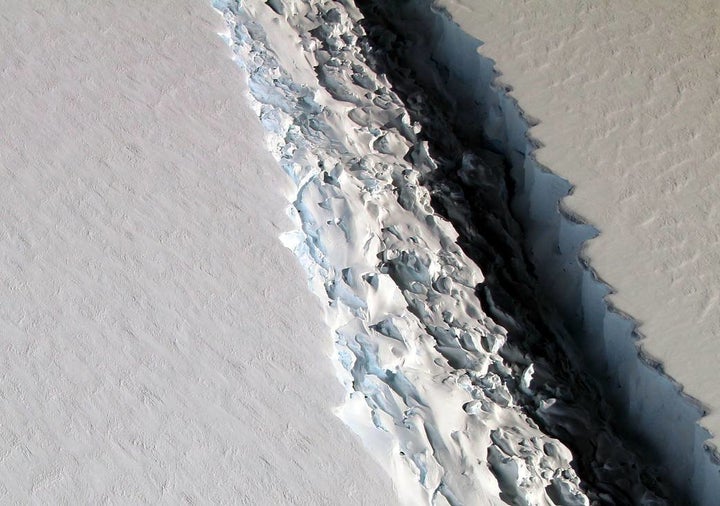Part of an ice shelf measuring 25% of Wales land mass is hanging by a thread in Antarctica, threatening to go adrift.
The Larsen C ice shelf in the Weddell Sea has seen a deep rift growing over the past few decades, as part of NASA’s Operation IceBridge it was being monitored with caution by experts.
But in a fitting end to 2016, December saw the scale of the problem escalate rapidly. As the rift cracking a further 18 kilometres in just two weeks, and without any warning.

Now the 5000 sq km iceberg remains only connected to the rest of the ice shelf by a tiny 20km peninsula.
Experts at the University of Swansea are predicting that it will break away at any moment, Professor Adrian Luckman, told BBC News: “If it doesn’t go in the next few months, I’ll be amazed.”
And when it does it will be one of the top ten largest floating icebergs ever recorded in the world.
Although Luckman reassures that this breakage will not have a direct impact on rising sea levels, there is concern that it will leave the rest of the shelf fragile and vulnerable to further break up.
NASA explains that these ice shelves work by buttressing the grounded ice behind them and when they collapse, the ice behind accelerates toward the ocean, where it then adds to sea level rise.
The 350m thick Larsen C ice shelf, is vitally responsible for holding back the flow of glaciers that feed into it and that this shift could speed up their passage.
It is estimated that if the total water content of the Larsen C ice shelf melted, it would raise global sea levels by 10cm.
Scientists were observing this particular shelf after the Larsen A shelf split in 1995, and Larsen B suddenly disintegrated in 2002.
There is continued debate about whether the cause of the split is climate change and global warming.
